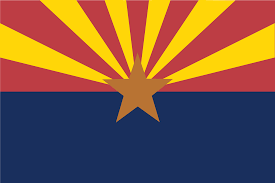I frequently am asked by clients during our conversations how I got into the aesthetics industry. I also am contacted quite regularly by Nurses and Nurse Practitioners trying to get their “foot in the door”. It is because I was contacted so frequently that I decided to start setting up events surrounding the particulars of “Starting your own Aesthetic Practice”. First let me tell you a little bit more about my background in nursing and then I will give you a few pointers if you want to get into the industry.
What are Aesthetic Nurses?
Aesthetic nurses, also known as cosmetic nurses, are registered nurses that specialize in providing aesthetic and cosmetic services and care to patients. A aesthetic nurse typically works at clinics, dermatology clinics, medical spas, outpatient surgery clinics or private practices, allowing for flexible working conditions and clean facilities. RNs who have completed their master’s degree may take on the role of aesthetic nurses. However the exact scope of their working varies by state, with some NPPs being specialized.
How I became an Aesthetic Nurse
I started my nursing career actually all the way back at age 18 as a nursing assistant. From there my first job after graduation as a Registered Nurse with a bachelor’s degree was on a telemetry (heart monitoring) unit. I have always been a strong believer in higher education, so my goal was always to get my master’s degree at a minimum. Before returning to school I worked as a Hospice Case Manager and also in a director role for a health insurance company.
Even in high school I remember having an interest in skin. Many people in the aesthetics industry have a story about their own personal struggle with acne that prompted them to learn more about skin, but that was not my case. I remember sitting in my Dermatologist’s office in Ohio and waiting hours to be seen at each visit. It was a huge beautiful office and I always thought it would be ideal to get to work in the medical industry yet starting my workday with the feel of a spa- type environment. Anyways, I was in college when I had my first realization that I had not been taking care of my skin. I had a mole that was removed and the pathology report revealed it was highly atypical. I then had to have it excised which proved more painful than I thought it would be. The dermatologist removed so much of the fat around the area that there was now a large indentation the size of my fist in my back. We joked (as I had a huge bandage on my back for my cousins wedding) about all the stories I could say had happened to me…. a knife fight, a tattoo, a lion mauling. Anyways, this was when I decided that I had done so much damage to my skin already that I could not afford to do anymore. I regretted using tanning beds in my teen years and sitting out in the sun baking in oil. That all changed. I began looking at people around me that had aged poorly, and I did not want to be them. I also did not want to have skin cancer, and I certainly didn’t want to have another excision on my body or face.
Despite my passion for skin and desire for working in Dermatology, it seemed like there were not many opportunities in the field. Many positions required experience or paid poorly if you didn’t have it. I continued to work at home for the insurance company for most of my schooling which worked out great. Looking back now I don’t know how I went to school full- time and worked full-time!
Dermatologist Training
In my final year of the master’s program I was lucky enough to have the opportunity to train with a local Dermatologist in Arizona. Throughout the program, I was also able to take a few continuing education courses that normally were only for Nurse Practitioners or Physicians but being a student, they allowed me to attend. I quickly realized that we would not be receiving much training related to dermatology in my schooling and it would be up to me to find additional opportunities as I had done such as finding a local Dermatologist to train under. I looked into formal educational programs strictly in Dermatology and there was a program in Florida that would prepare Nurse Practitioners with a Doctorate and focus on Dermatology. It was a thought for down the road, although I had no desire to move.
Aesthetic Nursing School Training
In my final year of my master’s program I also decided to take a basic aesthetics course on Botox and fillers with a local nurse practitioner. This is the part where if you’ve skipped over my background because you only wanted to know about the industry that you can tune back in. I searched online to find where to train locally. There were only a few options at the time. One required you bring your own models to the school and you paid for the product. I had never had Botox before, and only had filler in my nasolabial folds once, so I really didn’t know how I would even know if someone was an ideal candidate for the training. I contacted a local school. Their program sounded good. It was pricey and was three days. The nursing board at the time only required an 8-hour class for Botox and fillers. Because I didn’t know if I would even be performing these cosmetic procedures in the future and it was more just informative at the time, I opted for that. Well let me tell you, I am so glad I did not have a job lined up because that training left me incredibly unprepared! I arrived knowing nothing and was asked if I got the training manual in advance- which I did not. I had deposited my money, but no one ever mentioned a training manual. So, I should’ve studied in advance, but I didn’t know that at the time. I had looked at videos online, but when you don’t know the basics they hadn’t helped much, especially back then videos were a lot less informative. So the NP training me immediately started asking me “how many units would you use on this person” and I was pretty much guessing. To top it off she had her baby in the treatment room! So I left feeling that I wasted $1000. I still had no idea how to inject Botox or fillers.
It takes time to learn aesthetic procedures.
Soon after the training I took it upon myself to attend some dermatology conferences and started to understand proper dosing, placement etc. Along with watching more videos and reading every consensus statement out there, I was learning aesthetics! I purchased some books on aesthetics too. So, if you haven’t gotten my point yet- IT TAKES TIME TO LEARN AESTHETICS! I cannot emphasize this enough. I have heard many stories of nurses being hired somewhere and then they go and take a two-day training and start working the next day- SCARY! What if you aren’t good at it? What if you don’t feel comfortable doing it? What if you only injected lips at the training and someone comes in asking for their cheeks to be injected? Aesthetics is not a see one, do one, teach one- that’s a medical school thing that you will get if you are already in the medical industry.
I had graduated as a Family Nurse Practitioner and worked at a wellness practice where I was able to perform Botox injections occasionally, and practice on friends and family as well. By practicing on people that I saw frequently I got to follow up on their results. I highly recommend that anyone starting out do this. Still charge your friends at least your cost and maybe also what your time is worth, but they also need to see you back or send pictures so that you can see the outcome.
It was not until my next position as a medical director for a medical spa that I began performing filler injections. It was much more frequent that I was performing Botox injections, but I was able to start getting comfortable injecting both products. I think starting off with just neuromodulators like Botox and getting comfortable with those first is a good idea. Yes, you can drop a brow (ptosis) with Botox, but the risk of injecting into a vessel with filler and not knowing the proper protocol to reverse it can cause much worse effects. So, after finding out the owner of the med spa I was working at was trying to purchase counterfeit products under my license, I decided it was time to venture out on my own and start my own company.
So, I touched upon a few things to do before even taking a class, but another thing I would say to do is take a day to shadow someone if they will let you. I mean, how do you know you want to work in aesthetics if you haven’t even walked a day in an aesthetic nurse’s shoes? Some practices may let you shadow for a day at no cost. A word on training too…I belong to Nurse Practitioner groups where people complain about the cost of training in aesthetics. There are multiple reasons why trainings are priced higher than some other medical trainings. One-If someone is truly a good aesthetic injector (and I’m pretty sure you don’t want to be trained by a bad one), they can make $1000/hour so turning around and charging someone $1000 for a whole day of training doesn’t make much sense unless it’s a large group, in which case you get very little hands-on training. Two-The products are expensive, and you are partly paying for them. Think about it…would you pay full price to have someone with no experience inject your face? Probably not. A training is usually deeply discounted in order to entice people to let you practice on them. In my practice, my clients are usually the people that participate in training days, so that is also money that I miss out on that they would otherwise be paying full price for services rendered. Three- Demand and competition. Everyone wants to get into the industry, and sadly although I am a big believer in #communityovercompetition, most injectors have a story of how someone that they helped went behind their back to steal clients etc. So most injectors that are busy are not going to train someone for free or at a low cost who could turn around and steal their clients, it needs to be worth their time.
Specialized Training Costs & Tips
As you dig deeper into the industry, don’t be surprised to find that everything costs something- advice, classes etc. I used to take phone calls for free when new injectors called needing advice, but it took away from time making money seeing clients and also my personal life. It also is a liability. I have had new injectors ask me questions on Instagram and I don’t know the background or if something happened with the client so for obvious reasons, I can’t answer those questions. If you are a Nurse Practitioner and your own medical director, it may be wise to have an experienced aesthetic injector that you can consult with when you don’t know the answer to something. If you are a Registered Nurse, you will need a medical director and they should have ample experience in Aesthetics to answer your questions. I touch more upon what to look for in a medical director in my seminar.
So back to the costs, do not pay for the most expensive introductory class. Learning, especially in this industry, is always ongoing. Also, make sure the person teaching you has many years’ experience performing injectables on a full- time basis. Before the class, have a way set up that you can practice soon, after the class. In my office, I have an option for trained injectors to come in, with my guidance and their own model, and we can assess and inject together. I would make sure to have a strong resume and cover letter that showcases all the extra training you have been doing related to aesthetics. Highlight what sets you apart. Most importantly, keep practicing. It can take a while to get into the field with no experience, and if you don’t practice it will feel like you didn’t even take that class. Many Nurses set up their own LLC because it can be difficult to get into the field with no experience.
Training for Aesthetic Nurses
If you have more questions attend one of my “Starting your Own Aesthetics Practice” seminars (Once our venue is allowing it again due to Covid-19) or contact us for private consulting. At this time, we only offer advanced trainings and private trainings AFTER you have completed the board required introductory training.




